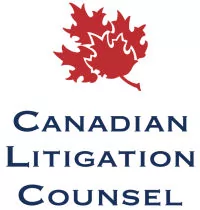The long-awaited appeal decision of Pyke v. Calgary (City), 2023 ABCA 304, was issued last month, helping to clarify the defences which municipalities in Alberta can avail themselves of when faced with a claim for damages. At the Alberta Court of King's Bench, the Honourable Justice Colin C.J. Feasby's found the City of Calgary partially liable for a fatal motor vehicle collision which occurred in 2014, deciding the City was not immune under sections 530, 532, or 533 of the Municipal Government Act. While the Court of Appeal disagreed with some of Justice Feasby's reasoning, they ultimately dismissed the City's appeal.
Background
The City was responsible for the maintenance and repair of a highway, which was the site of an unfortunate accident where a vehicle lost control and launched over the median into oncoming traffic. The median was raised up on a curb which had accumulated gravel, snow, and dirt next to it, resulting in a compacted slope and lower curb height.
The design of the median was not in accordance with accepted design standards, and created a risk that a vehicle could strike the curb, and launch over the median, or that debris could build up and decrease the median's effectiveness. Justice Feasby found at trial that the City was aware of the build-up of the gravel and snow on the curb, but had not addressed it for years. Further, the highway in question was a busy, urban road which had a history of vehicles crossing the median – a fatal one occurred less than 3 months prior to the accident at issue.
The relevant sections of the MGA dealt with in Pyke are sections 530, 532, and 533. Section 532 outlines a municipality's duty to keep all roads and public places in a reasonable state of repair – if they fail to uphold this duty, then they will face liability for damages. However, municipalities can seek immunity from damages under a few sections, including subsections (6) and (7) if they did not know, or ought to have known, of the damages, or if they took reasonable steps to prevent disrepair. On top of this, section 530(1) shields municipalities from liability when damages are caused by a system of inspection or maintenance, including the manner in which the system is carried out, the frequency, infrequency, or absence of same. Section 533 can also shield a municipality from liability for damages, if the damages are caused by the presence or absence of barriers or curbs adjacent to a road, or the disposition of dirt adjacent to a road, not within the “travelled portion.”
At trial, Justice Feasby found that section 530 cannot exempt the City from their duty to keep the median and curb in question in a reasonable state of repair, pursuant to section 532. Unless section 530 is interpreted in a narrow fashion, section 532 would be rendered inoperative. The highway's median was found to be in a state of disrepair, such that the City was liable for the accident, at least in part.
Appeal
The Court of Appeal found that sections 530 and 532 can function alongside one another, and do not conflict completely with one another – although section 530 necessarily must take on a narrower interpretation. The words of section 530(1) indicate that the immunity from liability applies to the planning and design of a system of inspection or maintenance, not the implementation of that system. This interpretation would lead to a municipality being shielded from liability for damages, if the claim relies on the argument that they would have known of the state of disrepair, had they planned or designed their system of inspection or maintenance in a different way. Therefore, despite the narrow reading of section 530, section 532(6) and (7) will continue to exempt municipalities from liability without sufficient knowledge and who have taken reasonable preventative steps.
Importantly, the Court of Appeal moved away from Justice Feasby's commentary that section 530's application does not include roads and other public places – which effectively gutted the entire section. Section 530 should freely apply to claims for damages with respect to roads and public places.
The City, in this case, was unable to make the argument theorized by the Court of Appeal, as they had a policy of inspection and maintenance, but did not actually take steps to address the compacted dirt, gravel, and snow built up next to the curb. The City failed to follow their own policies, and did not take reasonable steps. Justice Feasby's finding that the City knew, or should have known, of the disrepair of the curb and median was not interfered with on appeal. Therefore, none of sections 530(1), and 532(6) and (7) could shield the City from liability.
To wrap up the Court's analysis, they also reviewed the application of sections 533(a) and (b) to the City. Section 533(a) was confirmed to not be engaged, as the issues in this case did not pertain to the presence, absence, or type of median installed – they revolved around the state of disrepair which the median was found to be in. The Court agreed with the lower court's analysis of section 533(b), deeming it to be inapplicable to the City. Planning and intention are required due to the wording of the section, but the compacted dirt, gravel, and snow were not intentionally placed next to the travelled portion of the highway at issue.
Conclusion
By their own admission, the Court of Appeal aims to prevent municipalities from adopting a “system” where they intentionally do not conduct maintenance or inspections, in order to avoid liability by relying on a broad reading of section 530. It is helpful to now have clear direction from Alberta's highest court regarding the way in which the sections of the MGA fit together, although it remains to be seen whether section 530 will be capable of providing a municipality immunity in the limited way it has been proposed. Section 530 may have been confined to such an extent that it is rendered relatively useless going forward, leaving municipalities to rely heavily on sections 532(6) and (7) for reprieve.
Recent decisions from Alberta courts have undoubtedly given the impression that the days of broadly painting municipalities with the brush of immunity, are behind us. However, the MGA does still provide valuable defences for municipalities in Alberta. Municipalities should aim to (1) be vigilant in their maintenance and inspection practices, (2) implement systems which include reasonable steps to prevent disrepair from coming about, and (3) follow the systems and policies employed. Further, once a disrepair has been discovered, a municipality must take reasonable steps to address said disrepair.
* * *
Brownlee LLP is a member of the Canadian Litigation Counsel, a nationwide affiliation of independent law firms .
The content of this article is intended to provide a general guide to the subject matter. Specialist advice should be sought about your specific circumstances.

